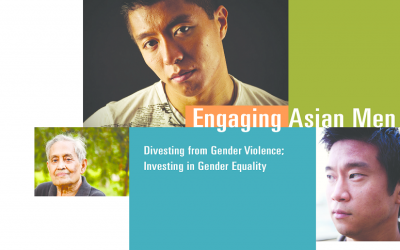Patriarchy & Power
The historical nature of gender-based violence confirms that it is not an unfortunate aberration but systematically entrenched in culture and society, reinforced and powered by patriarchy.
Systemic Gender Oppression
Violence against women maintains the structures of gender oppression; be it carried out by individuals in private and/or by institutional forces in the public sphere. A UN Women study reveals that in combat zones, it is now more dangerous to be a woman than to be a soldier. Families, communities, and social, legal and civic institutions may covertly and overtly endorse it. Whilst violence commands greater attention and fear; sexism and misogyny do their share to shape inequality, by defining and upholding restrictive gender norms.
Patriarchy
Patriarchy is about the social relations of power between men and women, women and women, and men and men. It is a system for maintaining class, gender, racial, and heterosexual privilege and the status quo of power – relying both on crude forms of oppression, like violence; and subtle ones, like laws; to perpetuate inequality. Patriarchal beliefs of male, heterosexual dominance and the devaluation of girls and women lie at the root of gender-based violence. Patriarchy is a structural force that influences power relations, whether they are abusive or not.
Power
Power sets the agenda for patriarchy. But, conflating it with abuse or masculinity is problematic and we need a more complex analysis of the typical power and control explanations. Feminism, which is about women claiming their rights to self-determination and equality, confronts gender conformity and aims to replace relationships of power with relationships of meaning.
Culture
Culture is used to justify gender inequality and violence by evoking traditional cultural beliefs about how women should be treated. The defense of the culture of a place, country, religion, etc., is in fact a defense of the culture of patriarchy in that country, religion, identity; and the culture of violence everywhere. The culture of patriarchy is not static: its manifestation on an army base differs from that in a rural town; just as the culture of patriarchy in Chicago differs from that of Dubai, or Manila.
Racial Oppression
Analyses of violence by men of color against women of color tend to over-emphasize how racial oppression contributes to men’s use of violence. But, within communities of color, women and non-abusive men who are exposed to similar social histories of oppression, do not resort to battering to cope with racism; just as LGBTQ women and men do not resort to hate crimes or intimate violence because of homophobia. While oppressions based on race, class, gender, heterosexuality, etc., are undeniable; explanations relying on oppression are inadequate. Because the intersection of race and gender are complicated, race is all too often privileged over gender. Holding this and other intersectionalities together offers a more effective route to accountability and transformation.
Resources on Patriarchy and Power
Engendering Change: Transforming Gender Roles in Asian & Pacific Islander Communities, 2007
This report asks and analyzes some critical questions, forcing us to take a hard look at all the factors that have to come together to effect transformation.
Colonization and Violence against Women, 2002
By Val Kalei Kanuha
This talk explores the connection between colonization and patriarchy, and how this dynamic perpetuates gender violence.
Engaging Asian Men: Divesting from Gender Violence; Investing in Gender Equality, 2013
What will it take for men in our Asian communities to divest from gender violence and invest in gender equality?
